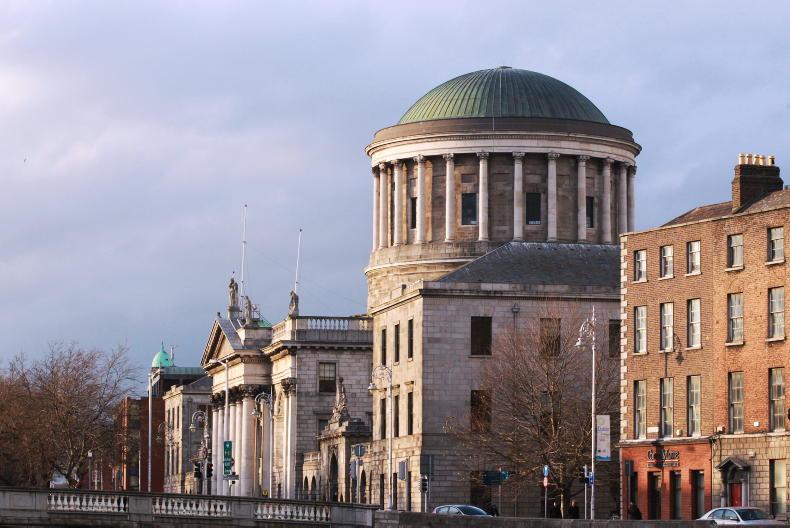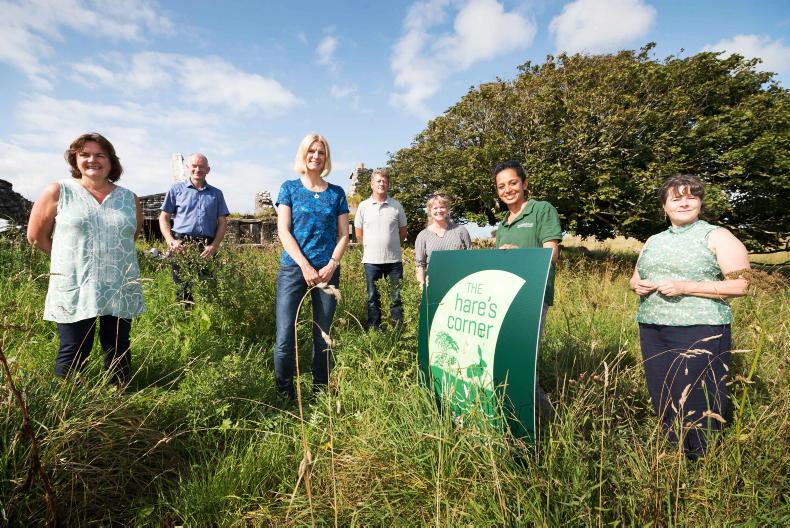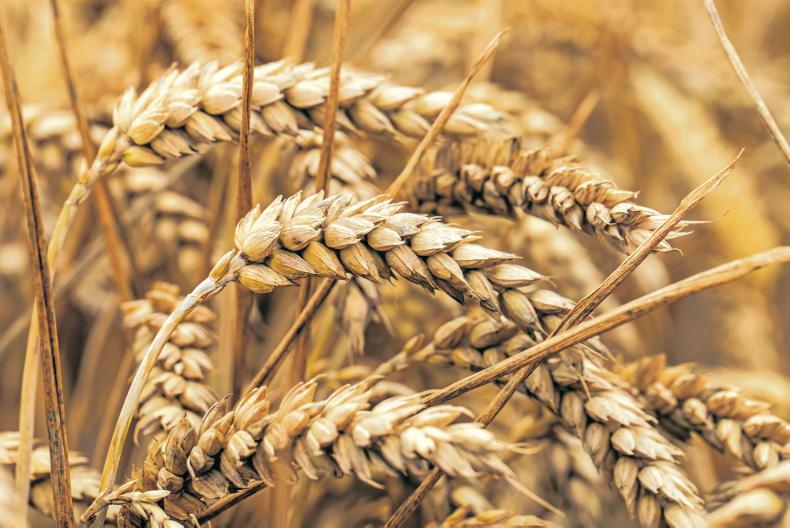At the outset, I think it is important to make a distinction between family partnerships and non-family partnerships. Family partnerships, which are quite common, most often arise in the context of parent/child partnerships. Non- family partnerships, which are less common, arise in the context of neighbouring farmers who can either be generally of a similar age or else a generation apart. I have encountered problems with both types of partnerships.
A distinction should also be drawn between Registered Farm Partnerships (RFPs) which have extra rules attached to them by reason of being registered with the Department of Agriculture, and Non Registered Partnerships, which are generally referred to as Tax Partnerships.
This article will focus on RFPs.
Reasons for failure
In my experience, those partnerships that break down are generally those that are gone into for the wrong reasons.
A common occurrence is where one partner believes that they are going to farm equally, whereas the other partner believes they can take over. Sometimes leases can be dressed up as partnerships for tax reasons or to enable landowners to continue to drawdown entitlements in their own right. Trying to dissolve these arrangements is particularly tricky, as what is on paper does not correspond to what is actually happening on the ground.
Another reason that arises frequently is where a young person is brought in to avail of their young trained farmer status for claiming increased grants under CAP, such as the Young Farmer Top Up and 60% grant under the Targeted Agricultural Modernisation Scheme. This typically arises in situations where there is already a child farming whose Young Farmer Status has expired (typically five years after coming on the herd number). That child already farming at home has expectations around inheritance and it can cause conflict where the other child’s role in the farming business is not clarified.
Legal rights in a partnership
I am asked regularly to put farm partnerships in place for farmer clients. Often there is confusion as to how they are legally constituted. Under the Teagasc Farm Partnership Agreement, ownership of land and entitlements does not change by going into a RFP. The owner licenses the land and entitlements into the partnership i.e. makes them available for use by the partnership. They can revoke that license and the assets will come back to them.
Often I find people think going into a partnership involves assets passing, but that is not the case. There is another structure called a Succession Farm Partnership where you can sign up to transfer ownership of assets between years 3 - 10 of going into the Succession Farm Partnership, but this structure is not very popular.
If for any reason the partnership comes to an end (typically on the death of a partner), those assets do not automatically pass to the other partner; it depends on what the farmer has in his/her will as to where ownership passes. When it comes to stock and machinery, these assets normally transfer in and become partnership assets. However under the Teagasc Farm Partnership Agreement, in the event of the partnership finishing, these animals and machinery normally go back to whoever contributed them and any surplus is divided according to the profit sharing ratio under the Partnership Agreement.
Another aspect worth highlighting is that a partnership is not a separate legal entity like a company. There is a look through approach to the individual partners within the partnership. There is also joint and several liability within a partnership. That means if one of the partners runs up partnership debts, any of the partners can be on the hook for those debts. There are protections built into the Teagasc partnership agreement to prevent significant debts being run up without the knowledge of the other partners. Furthermore, if a farm is being run in a partnership, generally any debt must be taken on by the partnership rather than the individual partners, which is not something all partners are comfortable with.
How assets are divided up in a dissolution
The Teagasc Farm Partnership Agreement gives a ranking as to who gets paid first in the event that a partnership is dissolved as follows:-
Debts & liabilities
All partnership debts and liabilities are paid first.
Distribution of undrawn income takes place: This typically arises where partners have left their profit share in the partnership account - they can take this next.
Payment of loans
If any of the partners have made loans or advances to the partnership, they are paid next. This typically arises where one of the partners puts money into the partnership bank account at the start to aid cashflow.
Capital is then repaid
This would include the stock and machinery contributed at the outset as the partners’ initial capital contribution.
Any surplus or deficit
is divided: In accordance with the profit sharing ratio.
As regards buildings, often the non-owning partner would be compensated as the owner of the land would have the benefit of those buildings after the partnership ends. The Teagasc Farm Partnership Agreement provides that in the absence of an agreed depreciation schedule and/or specific terms for dealing with an improvement made or paid for by the partnership, where the improvement materially enhances the value of the asset, the owner has to compensate the partnership in an amount equal to the value of the asset written down in line with the capital allowances claimed. There is no compensation as such for having used up the partner’s ‘Young Trained Farmer’ status, which can only be claimed once during their lifetime and generally within five years of having commenced farming.
Get proper advice when planning a partnership
From the foregoing, it is important to go in partnerships for the right reason. In my own work, I have seen a huge surge in the number applying for RFPs because of the rate increase in the Young Farmer Top Up, now called the Complementary Income Support for Young Farmers (CIS-YF). Last year this payment equated to a top-up on entitlements of approx. €68 per hectare up to a maximum of 50 hectares i.e. €3,400 per year for a maximum of five years. However this will be increased to an average of €175/ha in 2023, i.e. up to €8,750 per year for a maximum of five years under the new CAP being introduced from 2023. There are also proposals to give female farmers 40 years or over preferential treatment in a RFP, which will drive interest.
In my experience, the vast majority of partnerships work out as planned. It is important to ensure that proper planning and advice is obtained beforehand to avoid any misunderstandings down the road.
Next week
Susan Maher, Agri Development Manager at Bank of Ireland outlines implications and potential clawbacks in the event of a partnership being dissolved.
Read more
Succession planning: let's get talking
Farm partnership breakdown part 1: Mediation
At the outset, I think it is important to make a distinction between family partnerships and non-family partnerships. Family partnerships, which are quite common, most often arise in the context of parent/child partnerships. Non- family partnerships, which are less common, arise in the context of neighbouring farmers who can either be generally of a similar age or else a generation apart. I have encountered problems with both types of partnerships.
A distinction should also be drawn between Registered Farm Partnerships (RFPs) which have extra rules attached to them by reason of being registered with the Department of Agriculture, and Non Registered Partnerships, which are generally referred to as Tax Partnerships.
This article will focus on RFPs.
Reasons for failure
In my experience, those partnerships that break down are generally those that are gone into for the wrong reasons.
A common occurrence is where one partner believes that they are going to farm equally, whereas the other partner believes they can take over. Sometimes leases can be dressed up as partnerships for tax reasons or to enable landowners to continue to drawdown entitlements in their own right. Trying to dissolve these arrangements is particularly tricky, as what is on paper does not correspond to what is actually happening on the ground.
Another reason that arises frequently is where a young person is brought in to avail of their young trained farmer status for claiming increased grants under CAP, such as the Young Farmer Top Up and 60% grant under the Targeted Agricultural Modernisation Scheme. This typically arises in situations where there is already a child farming whose Young Farmer Status has expired (typically five years after coming on the herd number). That child already farming at home has expectations around inheritance and it can cause conflict where the other child’s role in the farming business is not clarified.
Legal rights in a partnership
I am asked regularly to put farm partnerships in place for farmer clients. Often there is confusion as to how they are legally constituted. Under the Teagasc Farm Partnership Agreement, ownership of land and entitlements does not change by going into a RFP. The owner licenses the land and entitlements into the partnership i.e. makes them available for use by the partnership. They can revoke that license and the assets will come back to them.
Often I find people think going into a partnership involves assets passing, but that is not the case. There is another structure called a Succession Farm Partnership where you can sign up to transfer ownership of assets between years 3 - 10 of going into the Succession Farm Partnership, but this structure is not very popular.
If for any reason the partnership comes to an end (typically on the death of a partner), those assets do not automatically pass to the other partner; it depends on what the farmer has in his/her will as to where ownership passes. When it comes to stock and machinery, these assets normally transfer in and become partnership assets. However under the Teagasc Farm Partnership Agreement, in the event of the partnership finishing, these animals and machinery normally go back to whoever contributed them and any surplus is divided according to the profit sharing ratio under the Partnership Agreement.
Another aspect worth highlighting is that a partnership is not a separate legal entity like a company. There is a look through approach to the individual partners within the partnership. There is also joint and several liability within a partnership. That means if one of the partners runs up partnership debts, any of the partners can be on the hook for those debts. There are protections built into the Teagasc partnership agreement to prevent significant debts being run up without the knowledge of the other partners. Furthermore, if a farm is being run in a partnership, generally any debt must be taken on by the partnership rather than the individual partners, which is not something all partners are comfortable with.
How assets are divided up in a dissolution
The Teagasc Farm Partnership Agreement gives a ranking as to who gets paid first in the event that a partnership is dissolved as follows:-
Debts & liabilities
All partnership debts and liabilities are paid first.
Distribution of undrawn income takes place: This typically arises where partners have left their profit share in the partnership account - they can take this next.
Payment of loans
If any of the partners have made loans or advances to the partnership, they are paid next. This typically arises where one of the partners puts money into the partnership bank account at the start to aid cashflow.
Capital is then repaid
This would include the stock and machinery contributed at the outset as the partners’ initial capital contribution.
Any surplus or deficit
is divided: In accordance with the profit sharing ratio.
As regards buildings, often the non-owning partner would be compensated as the owner of the land would have the benefit of those buildings after the partnership ends. The Teagasc Farm Partnership Agreement provides that in the absence of an agreed depreciation schedule and/or specific terms for dealing with an improvement made or paid for by the partnership, where the improvement materially enhances the value of the asset, the owner has to compensate the partnership in an amount equal to the value of the asset written down in line with the capital allowances claimed. There is no compensation as such for having used up the partner’s ‘Young Trained Farmer’ status, which can only be claimed once during their lifetime and generally within five years of having commenced farming.
Get proper advice when planning a partnership
From the foregoing, it is important to go in partnerships for the right reason. In my own work, I have seen a huge surge in the number applying for RFPs because of the rate increase in the Young Farmer Top Up, now called the Complementary Income Support for Young Farmers (CIS-YF). Last year this payment equated to a top-up on entitlements of approx. €68 per hectare up to a maximum of 50 hectares i.e. €3,400 per year for a maximum of five years. However this will be increased to an average of €175/ha in 2023, i.e. up to €8,750 per year for a maximum of five years under the new CAP being introduced from 2023. There are also proposals to give female farmers 40 years or over preferential treatment in a RFP, which will drive interest.
In my experience, the vast majority of partnerships work out as planned. It is important to ensure that proper planning and advice is obtained beforehand to avoid any misunderstandings down the road.
Next week
Susan Maher, Agri Development Manager at Bank of Ireland outlines implications and potential clawbacks in the event of a partnership being dissolved.
Read more
Succession planning: let's get talking
Farm partnership breakdown part 1: Mediation










SHARING OPTIONS